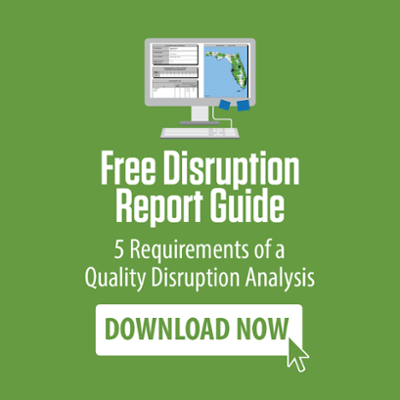By Tim Fitzgerald on May 5, 2021 12:00:00 PM
One of the most important parts of vetting carriers for your dental insurance clients is making sure they have provider networks that work for their employees. A key way to measure this is by using network access reports. Network access reports give important data to judge carriers’ provider networks to make sure you aren't just offering affordable dental insurance options - but accessible options too. Whether you are just learning how to interpret network access reports or are a veteran user, here are four tips to help you take full advantage of this awesome reporting resource!
Understand What the Network Access Report Measures
Aside from being a great tool to judge provider distance -- network access reports can tell you which dental insurance carriers are best equipped to deal with your client’s pain points. The reports can have a lot of different data, but most include:
- Provider counts per city
- Employee counts per city
- Average distance an employee will have to drive to the nearest providers
This information is extremely valuable for your client. Even if every carrier has local providers, you’ll still be able to see helpful insights. For example, one carrier may show more providers in your client’s area. Or another might have more providers in rural areas where your client’s have remote employees or retirees. These can be big factors in helping you identify which dental insurance options are the best fit for your client.
Understand Your Client’s Needs
You already know that every client is unique. But does your network access report request reflect their unique needs? Before you construct your network access report standards, make sure you know your client’s access needs. Are they located in an urban, suburban or rural area? How many employees do they have? What issues are they having with their current carrier? If you aren’t sure what pain points your client is having, here are some questions to help.
- Are any of your employees struggling to find providers?
- What providers are your employees using? Do they have any “favorite” providers?
- Do you have many remote employees or retirees living in rural areas?
- Are any of your employees driving too far to get care?
Knowing your client’s needs will help you create a network access request that brings them the most relevant information – helping them make the best decision for their employees. Which brings us to our next tip.
Build the Parameters of Your Network Access Report Request to Best Support your Client
Just because you know what’s important to your clients doesn’t mean the network access report will automatically show you what you need. Make sure to choose the right parameters for your request. There are two elements to consider when creating your parameters:
1. Choosing your access standard – The access standard is the number of providers needed to be a certain distance from the employee’s home ZIP code for them to have adequate access. The range is straightforward and easy to read, as seen below.Examples of Analysis Parameters
2 General Dentists in 10 miles 2 Optometrists in 10 miles
1 Specialist in 15 miles 1 Ophthalmologist in 15 miles
Make sure to choose standards that match your client’s population. If they are in an urban or suburban area with plenty of dentists, using a stricter standard will help judge which carriers have the strongest network. But if they are in a rural area, using a broader standard might produce better results.
2. Provider Groups - Provider groups determine what standards the report applies to each provider type or specialty. For example, General Dentists are a provider group. There are many ways you can designate provider groups – but the two most common are:
- General Dentist + Specialists: This report analyzes two provider groups – General Dentists and Specialists (All specialties are grouped together). This is most useful if you want to judge access to all specialist types by the same standards.
- General Dentists + Each Specialty: This report analyzes seven provider groups - General Dentists and each specialty separately. This is most useful if you need different standards for different specialties. Because the report judges each specialty separately, you will have more data to look at and compare.
The Census
Carriers generate network access reports by cross-referencing two sets of data – their provider list and your client’s census. So, don’t forget to send them a census file! You want to make sure your census is complete and accurate. The file you send to carriers should:
- Have correct and up to date employee information
- Have data for employees, retirees, and dependents that your client wants measured
- Include 5-digit ZIP codes for all employees
- NOT have any unnecessary PHI or confidential information like social security numbers or salaries
Sending a census that follows these guidelines ensures that the network access report generated is accurate and keeps your client’s employees protected.
Network access reports are your best resource to understanding the scope of a carrier’s network in relation to your client. They are a key element in helping you empower your clients to choose the carrier that is best for them. But these tips are just a peek into the world of network access reports and network analysis. If you’d like to learn more about provider networks and how they can affect your clients, check out our blog on considering provider networks and download our disruption report guide!
..




comments